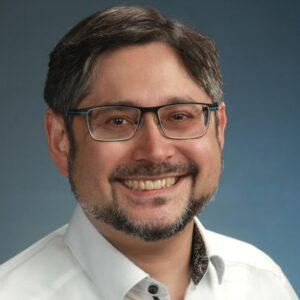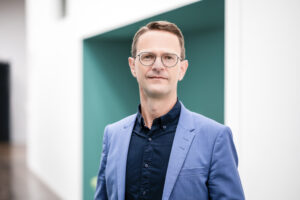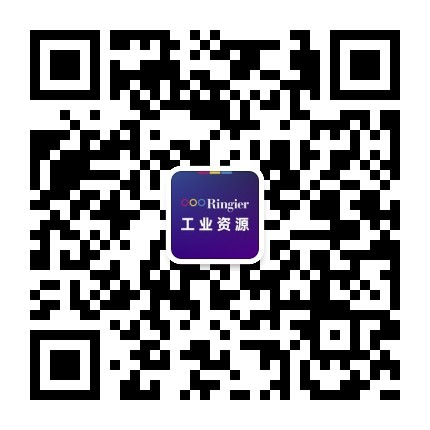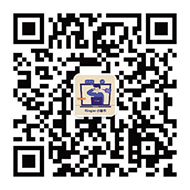Are you keen to experience the future of digitalization in the metalworking sector at first hand? Visitors to the EMO Hannover 2025 from September 22 to 26, 2025 will be able to do just that. umati, which stands for "universal machine technology interface", is the global connectivity initiative of the VDW (German Machine Tool Builders' Association) and the VDMA. At the trade fair, there will be demonstrations of how it can be used to allow machines to communicate easily, seamlessly and securely with each other on a worldwide basis and how it can be used to turn data into added value.
Since the premiere of umati at the EMO Hannover 2019, the initiative has established itself worldwide. Over the years, umati has been a regular fixture at numerous trade fairs in Germany and abroad. However, an important, perhaps lesser know fact about the initiative is that there are now over 15 technology sectors of the mechanical and plant engineering industry which offer easy access to production data in a uniform, standardized data ecosystem: In addition to machinery in general, these include additive manufacturing, flat glass production, geometric measurement technology, assembly technology, laser systems, image processing, rubber and plastics machinery, robotics, surface technology, textile testing, weighing technology, wire harness production, woodworking and, of course, machine tools for metalworking. Accordingly, a large number of the OPC UA specifications on which the interfaces are based have therefore been successfully implemented in products.
Visitors can now find out about the latest developments at the umati booth in Hall 6, A18. The booth focuses on a wide range of aspects that help machines and software to communicate successfully with each other and thus enable standardized access to data, which ultimately makes it possible to generate added value from this data, for example in the form of energy consumption analyses or AI applications. Dr. Alexander Broos, Head of Research and Technology at the VDW and umati project manager, is delighted with the variety of topics on show: "umati has been able to prove that interfaces don't have to be complicated. Now it's all about demonstrating how the data can be used to create added value." This requires numerous, often smaller further developments or solution modules, which then combine to achieve the desired result.
Energy monitoring for carbon footprints
Several sub-exhibits at the umati booth cover a common topic: The determination of energy consumption data. This is necessary, for example, in order to comply with reporting obligations on the carbon footprint of companies or products. At the heart of this are implementations of OPC UA 40001-4 (OPC UA for Machinery Part 4: Energy Management). One example of this comes in the form of Dutch consortium "Factory of the Future is Now", of the FPT-Vimag association. It presents a paperless smart manufacturing system in Hall 15 at Stand B05 in collaboration with umati partners Cellro, DMG Mori, Heidenhain, Mitutoyo and Schunk. The energy data from production assets is fed live into the umati dashboard. This allows the specific energy consumption per manufactured product to be determined.
umati partner Konzeptpark GmbH from Lahnau will be exhibiting a clever solution for determining energy consumption with the simplest of means. This involved enhancing commercially available WLAN smart plugs (intelligent sockets) with OPC UA functionality so that they also provide the current power consumption of a connected power consumer in a standardized data format.
umati partner PTW (Institute for Production Management, Technology and Machine Tools) at the Technical University of Darmstadt is taking this approach even further. They are aggregating energy data and making it available for other applications via data space connectors as a contribution of the VDMA to the "Energy Monitoring" use case in the context of the Manufacturing-X initiative and the Factory-X research project. These "federated data spaces" make it possible to share sensitive data based on fair rules - a feature that is urgently needed to increase networking in the manufacturing industry.
umatiConnect closes the gap between MTConnect and umati
umati partner IFW (Institute of Production Engineering and Machine Tools) at Leibniz University of Hannover, together with the machine tool manufacturers Mazak and DMG Mori, has closed an important gap in the market. Previously, there was no standardized connector that allowed machines to be connected to established MTConnect data systems with OPC UA for Machine Tools or, conversely, to integrate machines with an established MTConnect interface into the umati world. The solution, called umatiConnect, is published as an open source software on GitHub and can be used by companies free of charge. This allows the users easily to make adjustmentsy, as not all implementations in the field are identical.
"With the umatiConnect adapter, we at Mazak are underlining our commitment to open standards and true interoperability. For our global customers, this means that integrating our machines into their existing, often highly varied production environments becomes much simpler. They are given the freedom to choose the best digital solution for them," says a delighted Mathias Dehn, Advanced Research Manager at Yamazaki Mazak Germany.
Dennis Do-Khac, Head of Product Development CNC at DMG Mori, adds: "In recent years, umati has also become more widely accepted in areas related to machine tools. For example, implementations are being created for the exchange of tool data or for interface usage by robots, automation solutions and coordinate measuring machines. These can then be integrated into standardized norms by the Joint Working Group. With umatiConnect, software solutions can now rely more closely on this technology thanks to a streamlined method of incorporating MTConnect-based legacy systems."
An aggregating server as an interface between local and global installations
There are different technologies available for transporting the data specified with OPC UA, on which umati is based. Pub/Sub has proven effective for large installations: Machines publish their data on a defined channel, applications subscribe to it and read the data that is relevant to them. Typically, data transport takes place via the MQTT message protocol, whereas direct client/server installations with precisely defined access rights are often chosen for local installations. "One of the major advantages of OPC UA in this context is that the data semantics are identical in all cases, i.e. the same standard applies. Only the transport protocol changes," explains Götz Görisch, Chairman of the Joint Working Group for OPC UA for Machine Tools and digitalization expert at the VDW. If data needs to be integrated into a local client/server network via Pub/Sub, this was not easy to achieve in the past. The solution in this case is to use an aggregating OPC UA server that subscribes to the Pub/Sub data stream and makes the selected data available in an OPC UA server for local applications. The Fraunhofer Institute for Machine Tools and Forming Technology (FhG-IWU), Chemnitz, and Seitec GmbH from Königsee, both umati partners who jointly develop OPC UA applications, have now developed an OPC Hub that solves this weakness in the technology. "With the OPC Hub, existing dashboards and software can still be used, with historical data available centrally. This benefits machine builders and customers alike," says Frank Seiferth, CEO of Seitec GmbH.
Simple traceability of products with Job Management and the AAS
The Asset Administration Shell (AAS) can solve the problem of ensuring traceability of manufactured products and securely storing their properties throughout the product life cycle. In the ideal case, it receives its data from the production process directly from the OPC UA interfaces implemented there. At the trade fair, Konzeptpark and Interop4X will show how this can be done successfully with a simple demonstrator that combines job management and weighing technology within umati and feeds data into the AAS. Visitors to the trade fair can learn more about the functionalities of the various modules while enjoying the piece of chocolate that serves as a reference product.
umati live demonstration shows connectivity you can touch
The EMO 2025 will once again feature the popular umati live demonstration, with numerous partner companies from relevant sectors at the EMO Hannover taking part with their machines, components and software solutions: Including machine tool manufacturers, suppliers of geometric measuring technology, additive manufacturing, robotics, image processing and, of course, software. A QR code attached to every device that is connected to the umati demonstrator allows visitors to see what is happening for themselves. The display shows how the data flows directly into the umati.app demonstrator application, where it is displayed uniformly with data from other devices and is therefore available to the user in a standardized form. Software providers can also integrate their systems into this data flow and demonstrate the benefits of their products both directly and live based on actual data from the machine pool at the EMO Hannover 2025.

Dennis Do-Khac, Head of Product Development CNC at DMG Mori

Frank Seiferth, CEO of Seitec GmbH

Mathias Dehn, Advanced Research Manager at Yamazaki Mazak Deutschland GmbH

Dr. Alexander Broos, Director Research and Technology at the VDW and umati project manage

Götz Görisch, Chairman of the OPC UA Joint Working Group for Machine Tools and Consultant for Digitalization and Product Security at VDW

 iConnectHub
iConnectHub
 Login/Register
Login/Register Supplier Login
Supplier Login


























